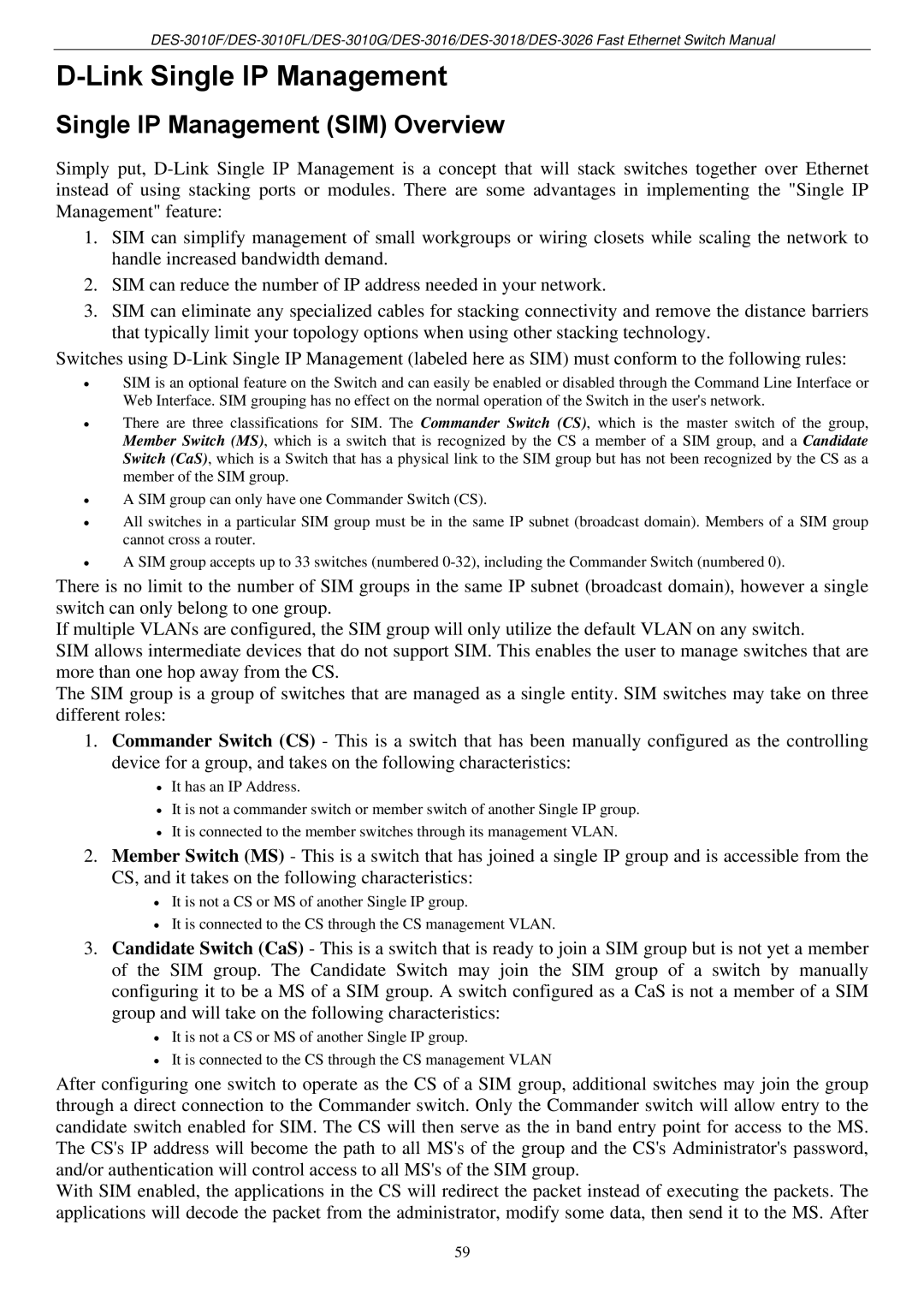D-Link Single IP Management
Single IP Management (SIM) Overview
Simply put,
1.SIM can simplify management of small workgroups or wiring closets while scaling the network to handle increased bandwidth demand.
2.SIM can reduce the number of IP address needed in your network.
3.SIM can eliminate any specialized cables for stacking connectivity and remove the distance barriers that typically limit your topology options when using other stacking technology.
Switches using
•SIM is an optional feature on the Switch and can easily be enabled or disabled through the Command Line Interface or Web Interface. SIM grouping has no effect on the normal operation of the Switch in the user's network.
•There are three classifications for SIM. The Commander Switch (CS), which is the master switch of the group, Member Switch (MS), which is a switch that is recognized by the CS a member of a SIM group, and a Candidate Switch (CaS), which is a Switch that has a physical link to the SIM group but has not been recognized by the CS as a member of the SIM group.
•A SIM group can only have one Commander Switch (CS).
•All switches in a particular SIM group must be in the same IP subnet (broadcast domain). Members of a SIM group cannot cross a router.
•A SIM group accepts up to 33 switches (numbered
There is no limit to the number of SIM groups in the same IP subnet (broadcast domain), however a single switch can only belong to one group.
If multiple VLANs are configured, the SIM group will only utilize the default VLAN on any switch.
SIM allows intermediate devices that do not support SIM. This enables the user to manage switches that are more than one hop away from the CS.
The SIM group is a group of switches that are managed as a single entity. SIM switches may take on three different roles:
1.Commander Switch (CS) - This is a switch that has been manually configured as the controlling device for a group, and takes on the following characteristics:
•It has an IP Address.
•It is not a commander switch or member switch of another Single IP group.
•It is connected to the member switches through its management VLAN.
2.Member Switch (MS) - This is a switch that has joined a single IP group and is accessible from the CS, and it takes on the following characteristics:
•It is not a CS or MS of another Single IP group.
•It is connected to the CS through the CS management VLAN.
3.Candidate Switch (CaS) - This is a switch that is ready to join a SIM group but is not yet a member of the SIM group. The Candidate Switch may join the SIM group of a switch by manually configuring it to be a MS of a SIM group. A switch configured as a CaS is not a member of a SIM group and will take on the following characteristics:
•It is not a CS or MS of another Single IP group.
•It is connected to the CS through the CS management VLAN
After configuring one switch to operate as the CS of a SIM group, additional switches may join the group through a direct connection to the Commander switch. Only the Commander switch will allow entry to the candidate switch enabled for SIM. The CS will then serve as the in band entry point for access to the MS. The CS's IP address will become the path to all MS's of the group and the CS's Administrator's password, and/or authentication will control access to all MS's of the SIM group.
With SIM enabled, the applications in the CS will redirect the packet instead of executing the packets. The applications will decode the packet from the administrator, modify some data, then send it to the MS. After
59
